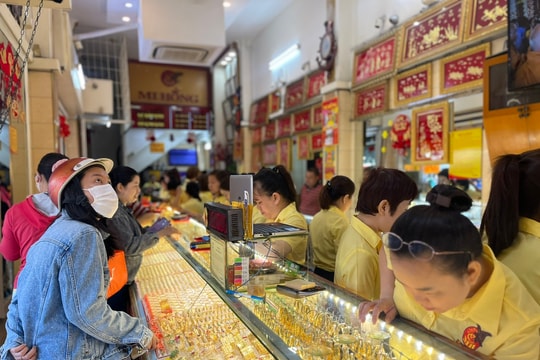Does red tide really poison marine life?
(Baonghean.vn) - Red tide is a natural phenomenon that has been observed and recorded for thousands of years. However, the sudden increase in this phenomenon in recent years has forced scientists to reconsider.
Sometimes, one can observe the seawater in some areas with quite shallow water levels changing color: sometimes it is slightly pink, brown, bright red, orange, purple, yellow, even turning dark blue, black like sewage water...
The unusual color is due to the pigments in seaweed. When growing conditions are favorable, some types of seaweed explode in number, causing the seawater to change color.
Why is there a red tide?
The explosion of microalgae numbers is thought to depend on factors: sunlight, seawater temperature, and nutrient content in seawater.
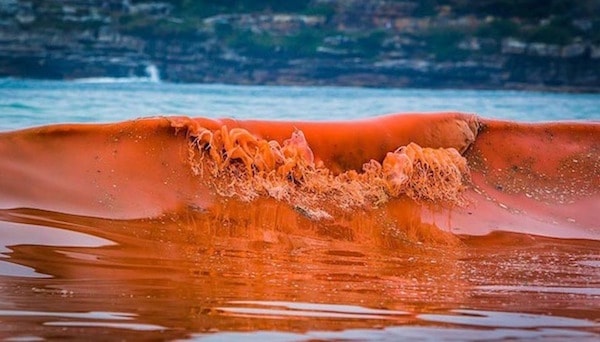 |
| Red tide - a fascinating sight, a natural phenomenon observed thousands of years ago. Photo: Internet |
In terms of natural conditions, the world in general and Vietnam in particular are being affected by the El Nino phenomenon - which is considered to be the strongest in the past 60 years. Warm ocean currents cause sea temperatures to rise, plus we are entering early summer with a large amount of sunlight - these are favorable conditions for microalgae to grow.
Meanwhile, human activities and industries can also be indirect causes of Red Tides. Domestic and industrial wastewater can be toxic to most aquatic animals but is a rich source of nutrients for microalgae.
In addition, shipping activities that alter ocean currents can also cause algae blooms, or act as a vehicle for moving algae masses from one ocean area to another.
How does red tide affect the ecosystem?
Of the 5,000 species of marine plankton, 300 species are capable of exploding in numbers, causing discoloration of the sea surface - aka Red Tide. One of the most easily observed phenomena associated with Red Tide is the mass death of marine life.
However, marine life dies during Red Tide for many different reasons.
In most cases, marine life dies during a Red Tide due to insufficient oxygen in the seawater.When microalgae explode in number, the decomposing activity of bacteria on the algae mass depletes oxygen in the water body, causing the death of marine life. In addition, some species of microalgae have the ability to damage the gills, affecting the respiratory activities of marine life.
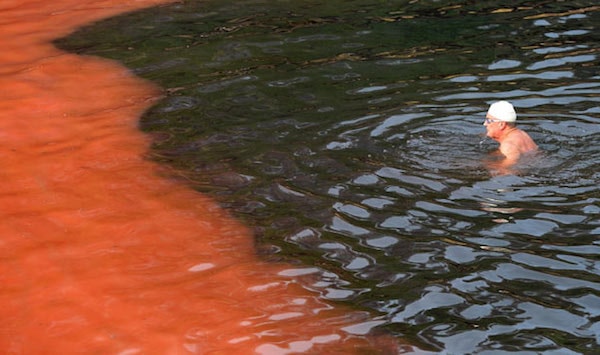 |
| Red tide is caused by non-toxic microalgae that kill fish by reducing oxygen levels and is not harmful to human health. Photo: Internet |
So, in this case, the marine life does not die from poisoning but from lack of oxygen. Consumption of these creatures does not lead to poisoning in humans.
In addition, of the 300 species of microalgae that can cause Red Tides, 80 species can produce toxins, causing deeper and wider impacts on the marine ecosystem. Microalgae “poison” the food chain through 2 ways:
Produces toxins that directly kill aquatic animals. Some types of "deadly" microalgae are often named: Karenia brevis, Noctiluca scintillans, Alexandrium excavatum,... Toxins secreted by microalgae can be neurotoxins or heavy metals secreted due to the metal ion exchange process of algae cells.
In fact, the Karenia brevis algae's toxins are so potent that they have killed scores of manatees in the Gulf of Mexico.
In another case, microalgal toxins can be absorbed and accumulated in the bodies of some aquatic animals without killing these organisms.Usually, mollusks such as oysters, clams, mussels, etc. and some algae-eating fish are the most ideal intermediaries.
When these contaminated organisms are consumed in large enough doses, poisoning can occur in humans and organisms higher up the food chain.
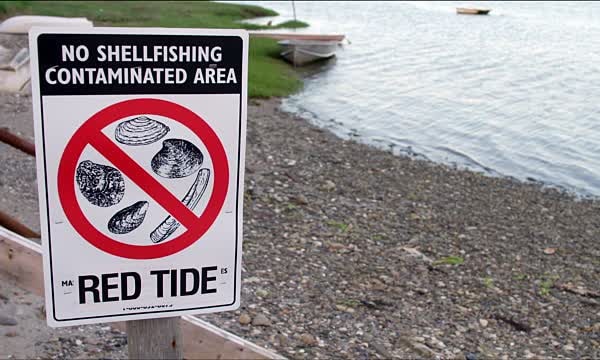 |
| A warning sign: "Do not catch shellfish, area contaminated by red tide". Photo: Internet |
Conclude
Red tide is a natural phenomenon, but its sudden increase in recent years has caused scientists to reconsider. Human activities can be an indirect cause of red tide, or resonate with this phenomenon, causing a wider and deeper impact on the marine ecosystem.
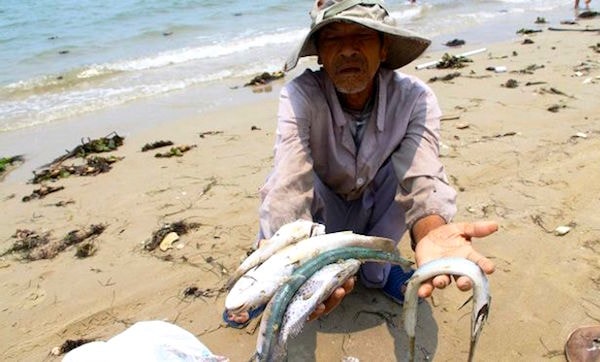 |
| When there is a mass fish death phenomenon suspected to be related to Red Tide, it is necessary to conduct tests to confirm the presence of microalgae and identify what type of algae it is and whether it is toxic or not? |
To determine the nature of the phenomenon, it is necessary to analyze and identify the species of microalgae that cause Red Tide. At the same time, dissection and testing of dead marine organisms is carried out to determine what species of microalgae it is, whether it secretes toxins, whether the marine organisms died due to poisoning or simply due to lack of oxygen. From there, timely and effective remedial and treatment measures are proposed.
Hai Trieu



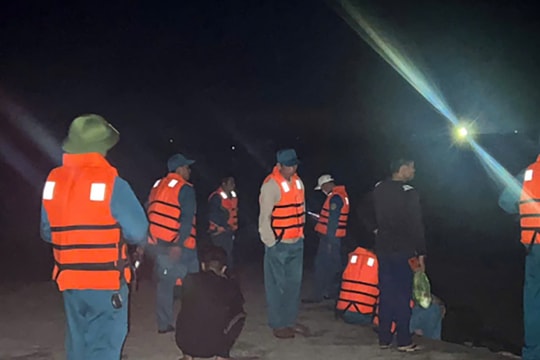
.jpeg)

